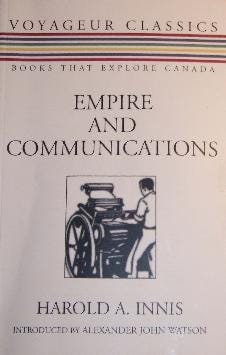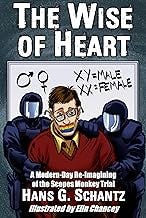What do Fields & Energy have to do with dragons? That was the homework Professor Rachel Fulton Brown assigned me. “Be sure to say something about why what you talk about is critical to understanding dragons.”
Following is my reply, originally published in the Dragon Common Room Newsletter, October 27, 2023.
Dragons have long captured our imaginations. Crafty, cunning, greedy, ancient… a power to inspire both fear and awe. My friends at the Dragon Common Room, under the direction of Professor Rachel Fulton Brown, are crafting a modern-day færie tale, in the spirit of Edmund Spenser's The Færie Queene and Francis Bacon's New Atlantis.
Draco Alchemicus, the alchemical dragon, is a love story in five acts. But what is the dragon? And how is the electromagnetism embodied in Fields & Energy relevant to the story?
For the answers, you must read on!
The dragon is the “Great Wyrm,” the serpent, the seducer, the Prince of this World, Satan himself, on a mission to tempt the weak, corrupt the gullible, and ensnare the easily beguiled with electric dreams of gold and spice. Fields & Energy relates to Draco Alchemicus on three levels: as rhetoric, as dialectic, and as underlying reality.
The Rhetorical: Electromagnetic fields and energy may be interpreted in terms of the media of ensnarement: the radio waves, the television images, and now the data impulses across the Internet by which the Great Dragon attempts to ensnare us. “The medium is the message,” opined Canadian philosopher and media theorist Marshall McLuhan (1911-1980) in his 1964 text Understanding Media: The Extensions of Man. McLuhan argued that the medium through which information is transmitted has a profound impact on the way that information is received and understood, often overshadowing the content or message itself.
McLuhan’s thinking was further influenced by his mentor, Canadian professor of political economy at the University of Toronto, Harold Innis (1894-1952), who distinguished between two types of media in his 1950 text, Empire and Communications. Innis’ Type I media are durable and long lasting, requiring considerable investment to create and maintain. They are associated with centralized, hierarchical control. Type II media are more ephemeral, easily transportable, and quickly distributed. They tend to be more decentralized and have a greater potential for democratic or participatory governance, as they allow for wider distribution and access to information.
Today’s electronic media combine features of both. On the Internet, data can be forever, so long as it is not deliberately erased or changed by those who own the servers, and however ætherial “the cloud” may appear, it requires substantial and expensive infrastructure to maintain. Yet novel, controversial, and antithetical views go viral with lightning speed. This tension between centralized tyranny and decentralized freedom is at the heart of modern online experience. Never before has tyranny had so powerful a tool to influence and propagandize people, monitor their actions, and control their behavior. Never before has freedom had so powerful a tool to investigate events, share truths, offer counter narratives, and organize opposition.
Who will win? The issue at present is in some doubt, but I am on the side of freedom. The reasons would take us too far afield for purposes of the present essay, however!
But there is more to electromagnetism than merely the means of rhetoric and persuasion. Electromagnetic fields and energy may also be interpreted dialectically.
The Dialectical: Dialectic refers to the art of arriving at truth through logic and reason. For too long, the fundamental underpinnings of reality have been thought to defy logic and reason. As I noted in this week’s installment, “1.1 Calculation and Understanding,” quantum mechanics – in conventional thinking – swept away causality and certainty, so we can only look at the world in a probabilistic fashion. Reality manifests in contradiction, they claim. Everything interrelates and connects to its polar opposite. As soon as we’re born, we begin to die. To achieve peace, we must use violence. There’s no utopia without a downside. We must destroy some people’s personal futures to save the planet’s future. For every positive, there’s a negative. We cannot have one without the other.
In this view, there is no right or wrong. The only political axiom is power. The only political question is which oppressors will wield power against which oppressed peoples. Twentieth-century political philosophers, like Saul Alinsky (1909–1972), encouraged us to embrace this contradictory political philosophy, because – or so they claim – quantum mechanics demonstrates contradiction is fundamental to reality itself [[i]].
But quantum mechanics itself must correspond to the macroscopic results of electromagnetism. Niels Bohr identified the “Correspondence Principle” in 1920 [ii]. This is the idea that quantum-mechanical predictions must reproduce the results of classical physics in the limit of many photons. Classical electromagnetism establishes the metes and bounds within which quantum physics resides. If quantum predictions violate well-established electromagnetic results, then quantum theory is flawed or broken, and we must modify or replace quantum theory to bring it back into compliance.
The Correspondence Principle empowers electromagnetic theory to impose upon quantum mechanics. As Fields & Energy will demonstrate, electromagnetic theory demands the introduction of hidden variables in order to make quantum mechanics a “complete” theory. In doing so, quantum mechanics becomes deterministic. No longer can contemporary political irrationality and contradiction be justified by appeal to the supposed arbitrary or contradictory nature of fundamental reality. No longer can the dragon justify its irrationality with a flick of the tail and the claim, “that’s just the way reality is.”
There is yet another layer of connection between electromagnetic Fields & Energy and Draco Alchemicus, for fictional and allegorical works tell lies so as to reveal fundamental truths of reality and existence.
Fiction & Reality: Draco Alchemicus is a work of fiction that illuminates the underlying reality of the human experience. Orwell’s farm animals rebelling against their human masters in Animal Farm serve as an allegory for the truth of the Russian Revolution and the subsequent rise of totalitarianism. The Wise of Heart employs a fictional courtroom to explore the truths of biological science versus transgenderism.
The Gospel itself employs parables with fictional or metaphorical elements to convey moral and spiritual truths. In that same spirit, Draco Alchemicus portrays a great electric City of Light full of ecstatic visions, apparitions, and alchemy, whose citizens drown in the intoxicating spells of the tyrant Dragon, who rules with the promise of utopia and unfettered freedom. In so doing, Draco Alchemicus uses fictional elements to expose fundamental truths of human nature and the nature of the world in which we live.
Fields & Energy is a work of non-fiction that illuminates the underlying reality of… well, reality. And particularly illumination. By dispelling the lies and fiction of the current physical narratives, Fields & Energy reveals the fundamental nature of reality.
What is the similarity and what are the common points of reference between the dragon of Draco Alchemicus and Fields & Energy? Are they merely rhetorical? Are they also dialectical? Are they the bond between fiction and reality? Or is it somehow all at once, distinct and separate, and yet joined together three in one in equal measure?
Our means may differ. In particular, I will not narrate my own journey in iambic pentameter! Not entirely, at least. But we both aim to defang the Great Dragon, expose his lies, and reveal the hidden underlying truths.
Two ships in common course to distant shore,
The first whose fields guide energy’s swift pace,
To dragon’s haunt with sinister allure,
Electric and magnetic, joined in equal grace.
The other, pigeons circling in flight,
Their captains each salute, in kindred stride,
At speed of thought, where secrets come to light.
As they traverse the water’s ebbing tide.
[i] Alinsky, Saul, Rules for Radicals, New York: Vintage Books, 1971, pp. 15-18.
[ii] Bohr, N. (1920), "Über die Serienspektra der Elemente" [About the serial spectra of the elements], Zeitschrift für Physik (in German), 2 (5): 423–478.









Niels Bohr was also famous for telling Einstein to 'Stop telling God what to do.'
Bohr recognised quite clearly that the plasma physics being uncovered or rediscovered back in the 20's corresponded exactly to the Far Eastern Tau and Eastern Vedanta.
This not only proves that plasma physics is the horse to back scientifically, but the ancients had it right and that time is cyclic... we're due to return to the 'whole' state. Puts the church in a rather awkward position.
Alchemy, hermeticism and eastern/christian esoterism all share the same fundamental truths. The universe is electric.
The dragon is the electric Birkeland current between planets, tornados ripping towns apart, thunderbolts crashing down/up, and the Kundalini lying at the base of the human spine, with the power to destroy a person, or give them the keys to the universe.
Thank you for asking! "Draco Alchemicus" is an allegory of Christ's love for the soul, modeled on the Song of Songs. So how does Damian defang the Dragon? The same way Christ saves his bride from sin! If you are curious for more backstory, check out our website, especially the "Behind the Scenes" subpage to "Draco Alchemicus." Website: dragoncommonroom.com